|
Ref : 0925
A good German violin of Unknown Origin
|

go to Home Page see more Violins |
This well-toned violin has all the hallmarks of German workmanship and although strictly-speaking of unknown authorship, one can conclude that it is from one of the better German studios of the late-19th century.The choice of materials is good throughout - the medium-grained spruce top is combined with mildly figured maple in the sides and the two-piece back. The scroll is beautifully crafted and balanced, but along with the neck is of somewhat plain wood. Arching is deep, rising quite sharply from the edges, notably so under the fingerboard and tailpiece. Fs and purfling are somewhat ponderous and perfunctory which point to at the probable trade-origin of the violin, a thought compounded by the incomplete fluting in the scroll. The varnish is an opaque dark-brown with a pleasant tinge of red, worn considerably in the high-contact areas, but certainly original and characteristic of some German workshops. It is in very good condition and structurally secure.
This violin is well-toned and pleasure to play - none of the 'tubbiness' often associated with high-arched German trade instruments. It can be described as robust, focussed and with projection throughout the register.
This violin was at some stage the property of young professional violinist, Stuart Campbell, who by all accounts was superbly gifted soloist. He signed up for the military during WWII and was killed in action. One can assume that the 'SC 1938' scratched into the lower rib at the chinrest was his work, as was the 'SC' on the button.
This violin is sold with a 1948 receipt from the Danish violinmaker, Amon Bilmark, who had a studio in Durban. The violin still has Bilmark's bridge on it.
 |
 |
 |
||
 |
Dimensions : Length of back: 36.5 cm
Condition : Structurally secure and in good general condition.
A crack in the front from the lower bout upward past the tailpiece, treble side, was repaired and cleated professionally long ago and does not threaten the structural stability.
It seems that some work was done to the back's neck button, but this is unobtrusive
Provenance : Present ownership withheld.
Price : P.O.A.
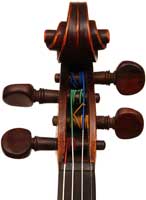 |
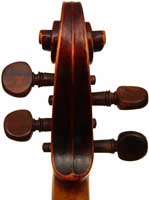 |
 |
 |
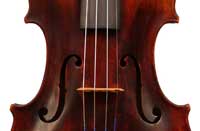 |
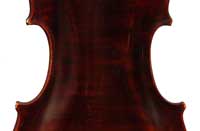 |
 |
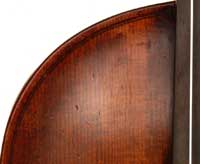 |
 |
 |
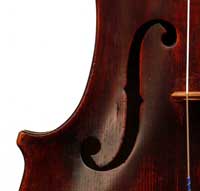 |
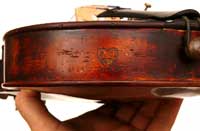 |
|||||
 |
 |
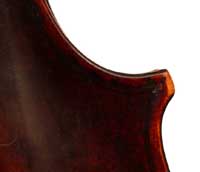 |